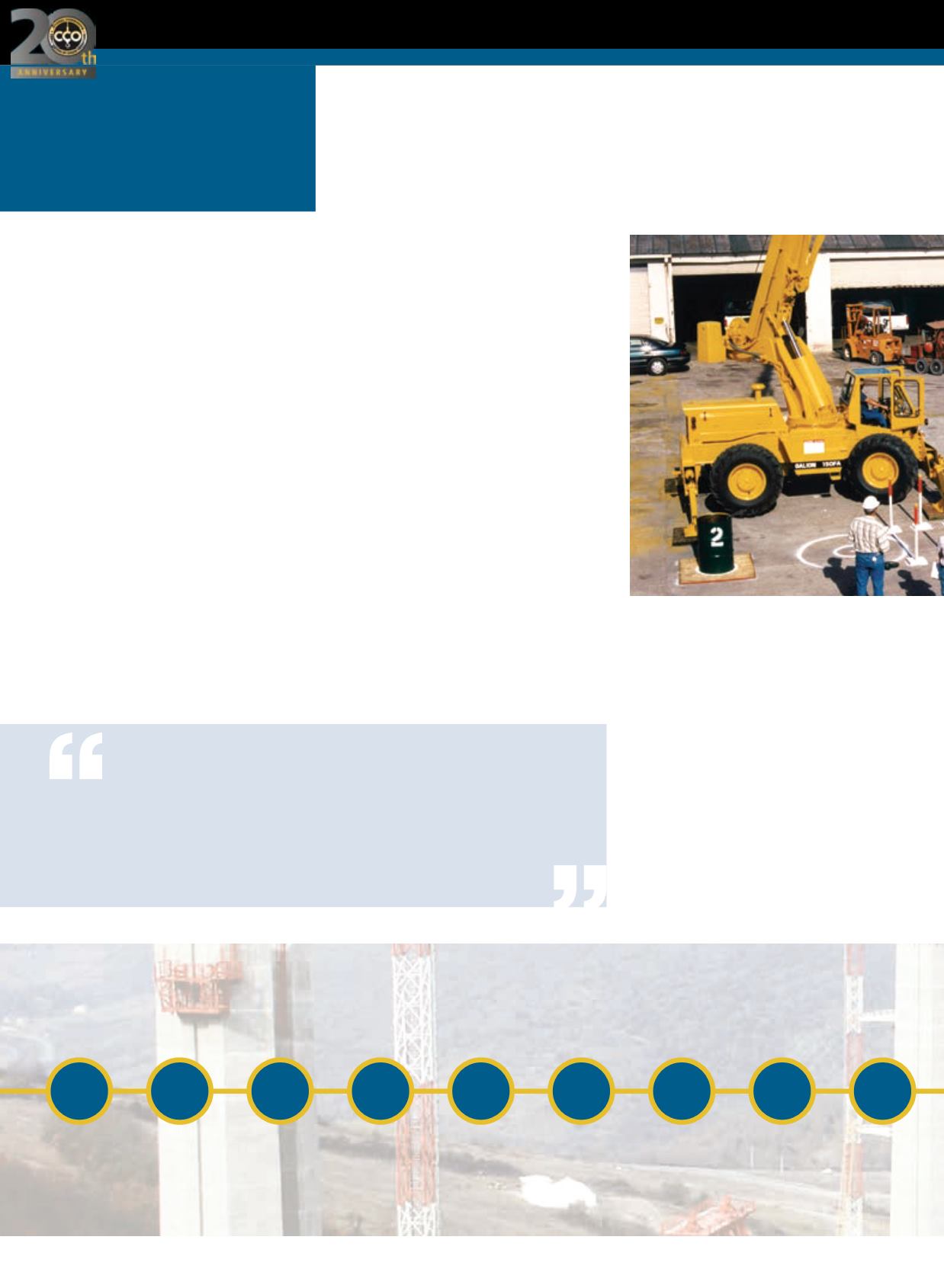
24
NCCCONEWS
Twenty years on, risk of
death and serious injury
ismuch diminished
ACT
APRIL 2015
steering the certificationprocess from its
infancy and currently serves theNCCCO
BoardofDirectors asVicePresident.
“But aswe sit here today and reflect on
theprogress that has beenmadeover the
years, I can certainly say it has been a
remarkable journey– evenone that has
far exceeded the expectations of those
who contributed their time and expertise
to this effort for years evenprior to the
formationofNCCCO.”
Hulse,who isVicePresident,Deep
SouthCrane&Rigging,Houston, TX,
was chairmanof theoriginalCertification
TaskForce establishedby theSpecialized
Carriers&RiggingAssociation (SC&RA)
that ultimately led to the formationof
NCCCO.He served asChairmanof the
Commission from its inceptionuntil
his election to theBoard in2012. “That
initial groupof industryvolunteershad
one simple (albeit formidable) goal,”he
said. “Namely, tomake this industry a
saferplace inwhich towork.And all the
evidence suggests thishas been achieved.”
NCCCOPresident, ThomSicklesteel,
concurs.He is certain theorganization’s
deep industry rootshaveplayed a large
part in fulfilling itsmission. “Noneof
themajor improvements in jobsite safety
that have comewith the introductionof
professional personnel certificationwould
havebeenpossiblewithout the industry
support that establishedNCCCO two
decades ago, andhas continued to sustain
it ever since,”he says. This translated
into subjectmatter expertiseprovided
bydedicatedvolunteers, aswell as vital
financial assistance (notably from the
nation’s cranemanufacturers) thatwas of
particular importance in the earlyyears,
he said.
NCCCOmarks
craneoperator
T
hepast twodecades have seen
CCO certification established
as the industry’s premier crane-
related credential.Whether judgedby
accident statistics, industry endorsements,
accreditation commendations, employer
preferences or the evaluations of those
whohavebeen certified (operators,
riggers, signalpersons andothers),
CCO certificationhas clearly achieved
itsmissionof improving the safety and
professionalismof crane and rigging
operations that itwas entrustedwithmore
than20years ago.
But, despite its grass-rootsorigins, its
unwavering safetymission, and its solid
industry support, the successof thenon-
profit organization set up todevelopand
administer that certification– theNational
Commission for theCertificationofCrane
Operators (NCCCO) –wasbynomeans
always soassured.
“Initial response towhat at that time
was thenew andoftenmisunderstood
process of certificationwasmixed,” recalls
KerryHulse,whoplayed a leading role in
It has been a remarkable journey, one that has
far exceeded the expectations of those who contributed
their time and expertise to this effort for years even
prior to the formation of NCCCO.
KERRY HULSE,
NCCCO VP
NCCCOMAJORPROGRAMMILESTONES
1996
1998
1999
2000
2001
2002
2003
2004
2005
First NCCCO
written exams
administered
Formally recognized
by federal OSHA
asmeeting
ASME operator
qualification criteria
Approved
under G.I. Bill
for veterans’
certification
American
Subcontractors
Association (ASA)
endorses CCO program;
first insurance premium
discounts offered
Overhead
Crane
Operator
certification
introduced
Accredited
by National
Commission
for Certifying
Agencies (NCCA)
Approved by
Department of Defense
for use by U.S.
military; West Virginia
first state to require
CCO certification
Associated General
Contractors (AGC) of
America and Steel Erectors
Association of America
(SEAA) recognize CCO
program
First new
certification
launched: Tower
Crane operator


